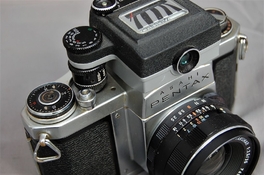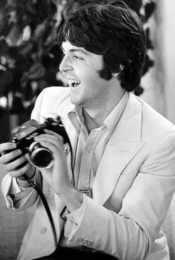That's not a finder, it's the external add on meter. I've got one on my SV
It's the early meter, my SV which I bought 18 months ago has the later version.
There is a simple answer to why the Beatles used Pentax cameras, they were given them by the Rank Organisation who were the Pentax distributors in the UK, also owners of T.T.&H (Cooke) lenses and other photographic companies, however their core business was J. Arthur Rank, the UK film production company, they also owned a cinema chain.
So the Beatles were given Pentax cameras when they made their film - A Hard Days Night - to promote the brand.
Paul McCartney's brother (Mike (McGear) is/was a photographer and travelled with the Beatles, working with their manager. Mike was also an excellent musician/comedian. Some years ago a group of us went to a Photography exhibition at the Tate Modern Gallery in Liverpool, nearby was a small gallery showing some of Mike McCarneys image of the Beatles, his work was superb.
Ian











 !
!


